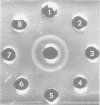Abstract
Extracts from several species of gram-positive cocci were prepared by a modification of the Rantz-Randall autoclave method and tested for reactions with rabbit anti-Peptostreptococcus anaerobius (ATCC 27337 and VPI 5737) sera in a capillary precipitin test. Antigen preparations from two reference strains of P. anaerobius (ATCC 27337 and VPI 5737) and six clinical isolates of P. anaerobius reacted with the P. anaerobius antisera. These extracts formed a line of identity by immunodiffusion and displayed at least one precipitin line by immunoelectrophoresis. Absorption of the antisera with either the autoclaved extract or a 10% whole-cell suspension from each of the eight P. anaerobius strains removed the precipitin line(s) observed during immunodiffusion and immunoelectrophoresis. Extracts prepared to other species of Peptococcus, Peptostreptococcus, and Streptococcus did not react with the P. anaerobius antisera in a capillary precipitin test. In addition antisera to Lancefield groups A to G did not react with the extracts from the eight P. anaerobius strains. Preliminary chemical analysis of the extracts from the eight strains showed that they contained approximately 0.2 mg of carbohydrate per ml and 3.6 mg of protein per ml. The rabbit anti-P. anaerobius sera used in this study detected a common antigen(s) shared by strains of P. anaerobius, but did not react with autoclave extracts prepared from other species of gram-positive cocci. This extractable antigen could be used in a capillary precipitin test to rapidly identify P. anaerobius strains isolated in the clinical microbiology laboratory.
Full text
PDF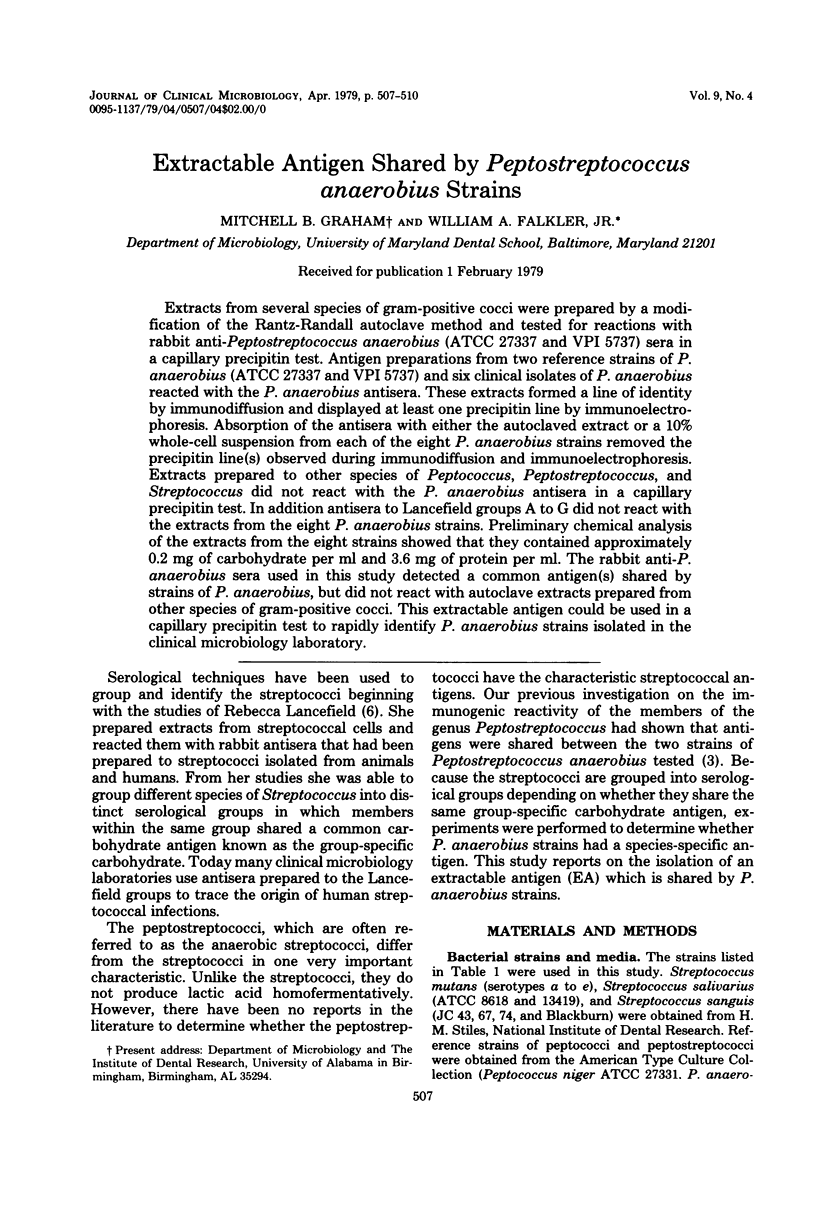
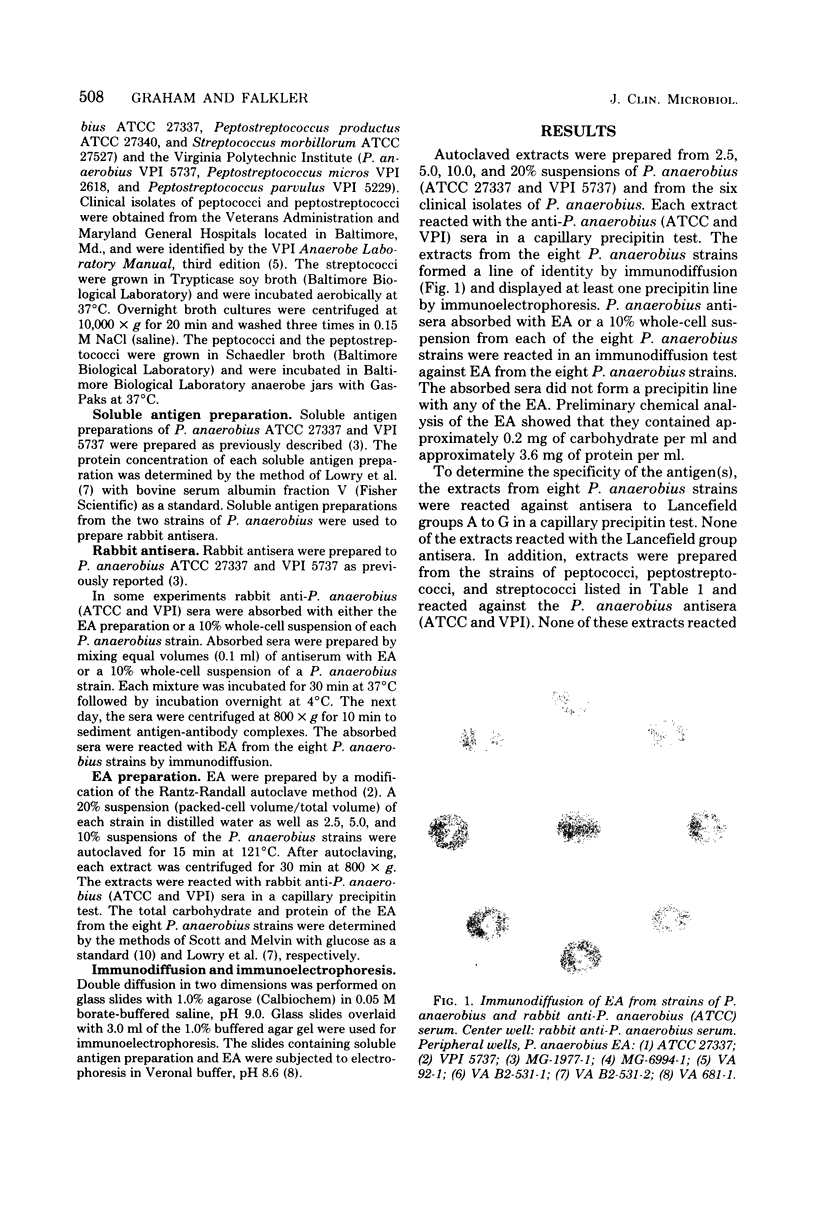
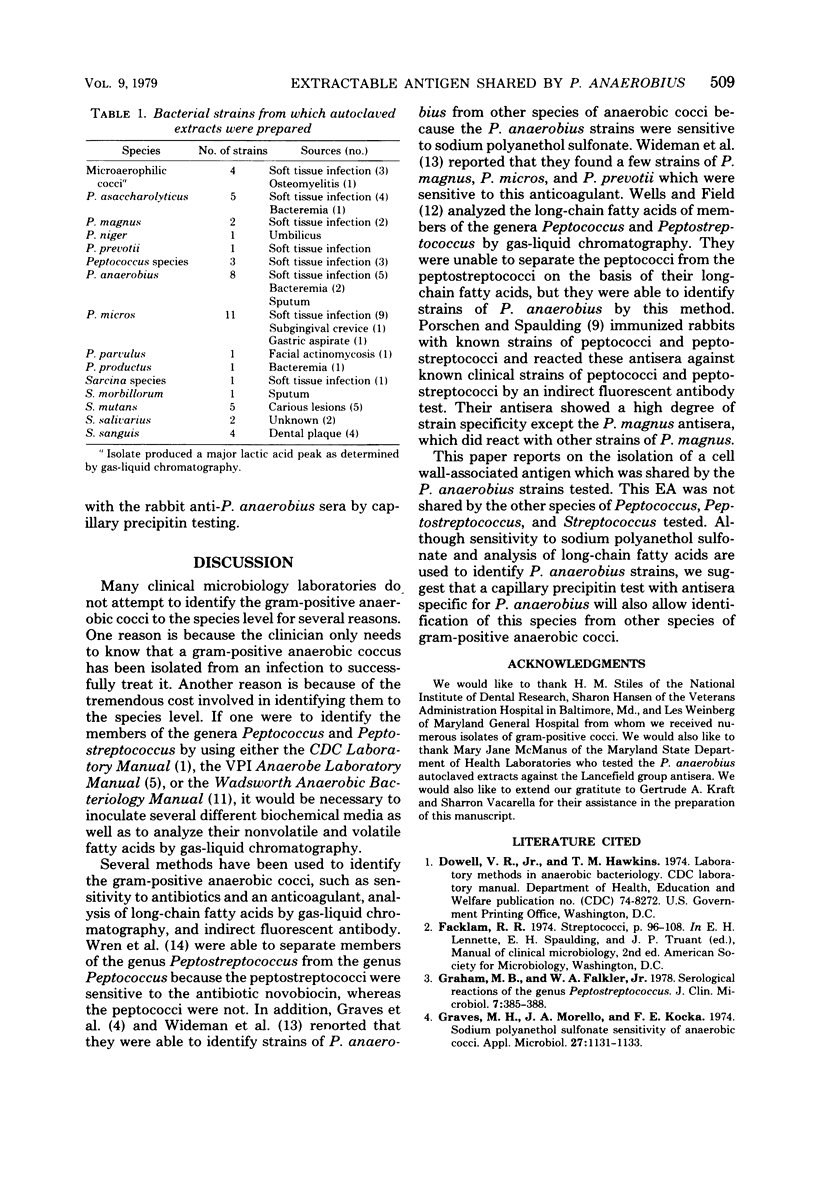
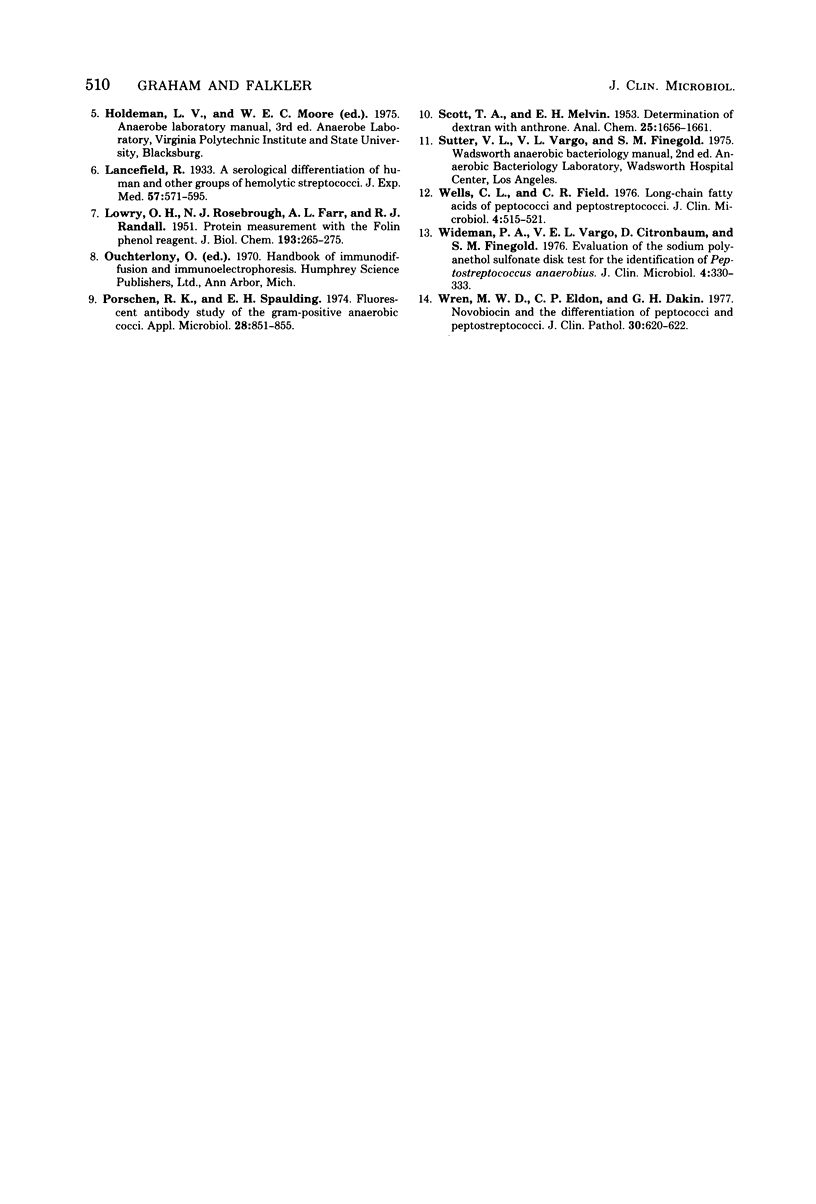
Images in this article
Selected References
These references are in PubMed. This may not be the complete list of references from this article.
- Graham M. B., Falkler W. A., Jr Serological reactions of the genus Peptostreptococcus. J Clin Microbiol. 1978 Apr;7(4):385–388. doi: 10.1128/jcm.7.4.385-388.1978. [DOI] [PMC free article] [PubMed] [Google Scholar]
- Graves M. H., Morello J. A., Kocka F. E. Sodium polyanethol sulfonate sensitivity of anaerobic cocci. Appl Microbiol. 1974 Jun;27(6):1131–1133. doi: 10.1128/am.27.6.1131-1133.1974. [DOI] [PMC free article] [PubMed] [Google Scholar]
- LOWRY O. H., ROSEBROUGH N. J., FARR A. L., RANDALL R. J. Protein measurement with the Folin phenol reagent. J Biol Chem. 1951 Nov;193(1):265–275. [PubMed] [Google Scholar]
- Porschen R. K., Spaulding E. H. Fluorescent antibody study of the gram-positive anaerobic cocci. Appl Microbiol. 1974 Nov;28(5):851–855. doi: 10.1128/am.28.5.851-855.1974. [DOI] [PMC free article] [PubMed] [Google Scholar]
- Wells C. L., Field C. R. Long-chain fatty acids of peptococci and peptostreptococci. J Clin Microbiol. 1976 Dec;4(6):515–521. doi: 10.1128/jcm.4.6.515-521.1976. [DOI] [PMC free article] [PubMed] [Google Scholar]
- Wideman P. A., Vargo V. L., Citronbaum D., Finegold S. M. Evaluation of the sodium polyanethol sulfonate disk test for the identification of Peptostreptococcus anaerobius. J Clin Microbiol. 1976 Oct;4(4):330–333. doi: 10.1128/jcm.4.4.330-333.1976. [DOI] [PMC free article] [PubMed] [Google Scholar]
- Wren M. W., Eldon C. P., Dakin G. H. Novobiocin and the differentiation of peptococci and peptostreptococci. J Clin Pathol. 1977 Jul;30(7):620–622. doi: 10.1136/jcp.30.7.620. [DOI] [PMC free article] [PubMed] [Google Scholar]



